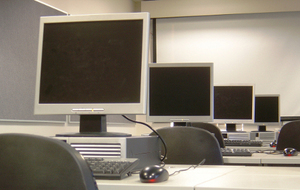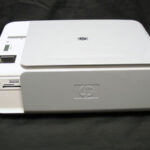Upgrading the OS of an older Windows computer from Vista or XP to Windows 7, especially the 64 bit version, has been suggested as beneficial for maximizing the use of an older machine. From personal experience, I can confirm that the upgrade does make for a positive change. It’s a smooth, easy to navigate interface, and much less buggy or likely to crash. Less well known is that the 64 bit version of Windows 7 doesn’t always play nice with older peripherals. In particular, I found that my laser jet printer and flatbed scanner no longer worked, and I couldn’t sync my Palm Pilot with its desktop software.
In searching around the internet for help files, forum posts, and drivers that would get me working, I learned that I had a lot of company. I also found workarounds for these compatibility issues and now have all my “vintage” equipment functioning again.
Whether you’re having similar issues following an upgrade, or if you’re considering upgrading and are worried about the potential consequences, these tips will give you some basic strategies and hopefully save you both time and grey hair.
Manually Search for Drivers
Windows “Plug and Play” features are usually pretty robust, but if they don’t work for your equipment, don’t give up. The best place to look for drivers that will solve your compatibility problems is the website of your peripheral’s manufacturer.
For example, Windows 7 detected my printer and thought the computer was sending files to print, but nothing actually printed. Samsung product support has a number of drivers for my ML-1450 laser printer freely available for download. It took a little experimenting, but I was able to get my printer working again fairly easily.
If your device’s manufacturer doesn’t offer drivers specifically for Windows 7, 64 bit, try any designed for Windows 7, 32 bit, or even Windows Vista.
Third Party Software
My UMAX Astra 3400 flatbed scanner, on the other hand, was completely invisible to my computer. Apparently this is a common problem with older scanners, but I found a helpful article on the “Information Week” website.
On the author’s advice, I checked out “VueScan,” a third party program that works with both 32- and 64-bit Windows and will run some amazing number of scanner models. Best of all, you can download the free demo version and try it out with your system before you buy. The basic version is about $40.00, but I’m getting better image quality and more options for output formats than ever before. So I’m happy, and would recommend anyone with scanner compatibility issues give it a try.
Supplemental Hardware
If, like me, you’re stubbornly clinging to your beloved Palm device until it dies of old age (and I know there are many of you out there!), then you’ll have yet another problem. Even the latest version of the Palm OS cannot sync via a USB connection if your OS is the 64 bit version of Windows 7. It can, however, synch via Bluetooth.
If your computer isn’t already Bluetooth enabled, you’ll need to buy a Bluetooth device. Check for compatible devices at the Windows 7, Compatibility Center. Be sure to specify “64 bit” in your search. I went with the StarTech.com, USBBT2EDR USB Bluetooth adaptor, for under $20.00, and it’s doing the trick for me.
When you get your Bluetooth device, plug it in to a USB port, but do not load the software that comes with it. Instead, let Windows 7 plug and play find the correct driver.
You’ll need to configure both your Bluetooth device and your Palm device so they can find each other. Palm has a pretty good tutorial about this part, complete with screen caps, but it is written for Windows Vista rather than Windows 7, 64 bit.
Despite what the tutorial says, you may need to set up a virtual serial port, but this is not difficult to do. Open “Devices and Printers” from the Start menu. Right click on the icon for your Bluetooth device, click “Bluetooth Settings,” and open the “COM Ports” tab. Help files are linked right from the menu.
Hopefully your upgrade will go smoother than mine did, and you won’t actually need these tips. Next on my “to do” list is trying to get some of my older, but favorite, software programs to run in the new environment. If I succeed, that will be another article!
Sources:
Michael Adams, “How to revive an old computer with quick and dirty PC repair,” NetworkWorld.
Samsung, Support, “ML-1450.”
Serdar Yegulalp, Information Week, “Windows 7 Survival Guide: From 32- to 64-Bit.”
VueScan.
Windows 7 Compatibility Center.
Windows 7 Compatibility Center, StarTech.com, USBBT2EDR USB Bluetooth adaptor.
Palm TX, “Synchronizing under 64-bit Windows editions: Bluetooth HotSync setup.”








